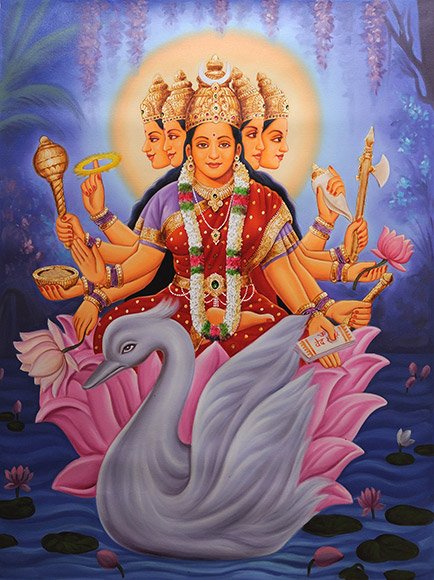Sharangi, Śāraṅgī, Saramgi: 10 definitions
Introduction:
Sharangi means something in Hinduism, Sanskrit, Marathi, Jainism, Prakrit, Hindi. If you want to know the exact meaning, history, etymology or English translation of this term then check out the descriptions on this page. Add your comment or reference to a book if you want to contribute to this summary article.
The Sanskrit term Śāraṅgī can be transliterated into English as Sarangi or Sharangi, using the IAST transliteration scheme (?).
In Hinduism
Chandas (prosody, study of Sanskrit metres)
Source: Shodhganga: a concise history of Sanskrit Chanda literatureSāraṅgī (सारङ्गी) refers to one of the 130 varṇavṛttas (syllabo-quantitative verse) dealt with in the second chapter of the Vṛttamuktāvalī, ascribed to Durgādatta (19th century), author of eight Sanskrit work and patronised by Hindupati: an ancient king of the Bundela tribe (presently Bundelkhand of Uttar Pradesh). A Varṇavṛtta (e.g., sāraṅgī) refers to a type of classical Sanskrit metre depending on syllable count where the light-heavy patterns are fixed.

Chandas (छन्दस्) refers to Sanskrit prosody and represents one of the six Vedangas (auxiliary disciplines belonging to the study of the Vedas). The science of prosody (chandas-shastra) focusses on the study of the poetic meters such as the commonly known twenty-six metres mentioned by Pingalas.
Languages of India and abroad
Marathi-English dictionary
Source: DDSA: The Molesworth Marathi and English Dictionaryśāraṅgī (शारंगी).—f A stringed instrument played with a bow. The popular form is sāraṅgī.
--- OR ---
sāraṅgī (सारंगी).—f (S) A stringed instrument of music,--a kind of fiddle.
Source: DDSA: The Aryabhusan school dictionary, Marathi-Englishsāraṅgī (सारंगी).—f A kind of fiddle.
Marathi is an Indo-European language having over 70 million native speakers people in (predominantly) Maharashtra India. Marathi, like many other Indo-Aryan languages, evolved from early forms of Prakrit, which itself is a subset of Sanskrit, one of the most ancient languages of the world.
Sanskrit dictionary
Source: DDSA: The practical Sanskrit-English dictionaryŚāraṅgī (शारङ्गी).—A particular musical instrument (played with a bow); cf. सारङ्गी (sāraṅgī).
--- OR ---
Sāraṅgī (सारङ्गी).—
1) A kind of stringed instrument, violin.
2) A kind of spotted deer.
Source: Cologne Digital Sanskrit Dictionaries: Cappeller Sanskrit-English DictionarySāraṅgī (सारङ्गी).—dappled; relating to the dappled antelope. [masculine] a kind of antelope, [several] birds, a bee.
Source: Cologne Digital Sanskrit Dictionaries: Monier-Williams Sanskrit-English Dictionary1) Sāraṅgī (सारङ्गी):—[from sāraṅga] a f. See below.
2) [from sāraṅga] b f. a kind of spotted doe or antelope (See kṛṣṇa-s)
3) [v.s. ...] the female of a [particular] bird, [Manu-smṛti ix, 23] (cf. śārngī)
4) [v.s. ...] a sort of violin, [Horace H. Wilson]
5) [v.s. ...] a kind of metre, [Colebrooke]
6) [v.s. ...] (in music) a [particular] Rāgiṇī, [Saṃgīta-sārasaṃgraha]
Source: DDSA: Paia-sadda-mahannavo; a comprehensive Prakrit Hindi dictionary (S)Sāraṅgī (सारङ्गी) in the Sanskrit language is related to the Prakrit word: Sāraṃgī.
Sanskrit, also spelled संस्कृतम् (saṃskṛtam), is an ancient language of India commonly seen as the grandmother of the Indo-European language family (even English!). Closely allied with Prakrit and Pali, Sanskrit is more exhaustive in both grammar and terms and has the most extensive collection of literature in the world, greatly surpassing its sister-languages Greek and Latin.
Hindi dictionary
Source: DDSA: A practical Hindi-English dictionarySarangi in Hindi refers in English to:—(nf) a typical stringed Indian musical instrument..—sarangi (सारंगी) is alternatively transliterated as Sāraṃgī.
...
Prakrit-English dictionary
Source: DDSA: Paia-sadda-mahannavo; a comprehensive Prakrit Hindi dictionary1) Sāraṃgi (सारंगि) in the Prakrit language is related to the Sanskrit word: Śārṅgin.
2) Sāraṃgī (सारंगी) also relates to the Sanskrit word: Sāraṅgī.
Prakrit is an ancient language closely associated with both Pali and Sanskrit. Jain literature is often composed in this language or sub-dialects, such as the Agamas and their commentaries which are written in Ardhamagadhi and Maharashtri Prakrit. The earliest extant texts can be dated to as early as the 4th century BCE although core portions might be older.
Kannada-English dictionary
Source: Alar: Kannada-English corpusSāraṃgi (ಸಾರಂಗಿ):—
1) [noun] the spotted deer, Axis maculatus.
2) [noun] the deer, Cervus (Axis) axis, of India and Sri Lanka, having a reddish-brown coat spotted with white, and branched, annually shed antlers; spotted deer; chital; axis.
3) [noun] a twenty-seven stringed musical instrument, the sound of which is a close approximation of human voice of the soprano range, used in Hindūstāni system.
Kannada is a Dravidian language (as opposed to the Indo-European language family) mainly spoken in the southwestern region of India.
See also (Relevant definitions)
Full-text: Saramgi, Sharngi, Sarangisarasamuccaya, Sarangya, Sharngin, Gaudasarangi, Krishnasarangi, Caranki, Abhyarhaniyata, Gayanakaceri, Abhyarhaniya, Kalavanta, Gitagoshthi, Saranga, Saraga, Priyasandhani, Vina, Ghodi, Kona.
Relevant text
Search found 5 books and stories containing Sharangi, Śāraṅgī, Sarangi, Sāraṅgī, Saramgi, Sāraṃgi, Sāraṅgi, Sāraṃgī, Sārangi, Shaarangi; (plurals include: Sharangis, Śāraṅgīs, Sarangis, Sāraṅgīs, Saramgis, Sāraṃgis, Sāraṅgis, Sāraṃgīs, Sārangis, Shaarangis). You can also click to the full overview containing English textual excerpts. Below are direct links for the most relevant articles:
Manusmriti with the Commentary of Medhatithi (by Ganganatha Jha)
Verse 9.23 < [Section I - Husband and Wife]
Paradise < [January – March, 2004]
Who’s Who Among Our Contributors < [January – March, 2004]
Reason in Carnatic Music < [April 1949]
Folk Tradition of Bengal (and Rabindranath Tagore) (by Joydeep Mukherjee)
The Garuda Purana (by Manmatha Nath Dutt)
Chapter CCXXVII - Different names of the Ayurvedic Drugs < [Dhanvantari Samhita]
Kathasaritsagara (the Ocean of Story) (by Somadeva)
Appendix 1.4 - Sacred Prostitution < [Appendices]